hampton court palace | |||
| |||
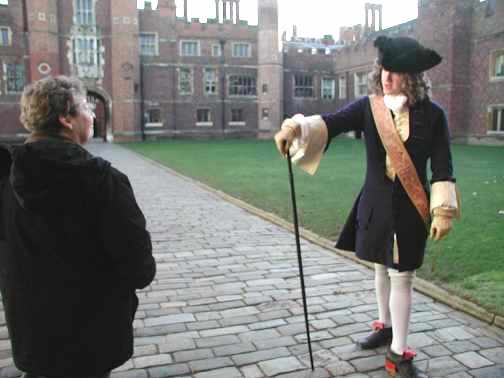 I decided to start with the first picture on the left of this page for a change. Had nothing to do with screwing it up. That's my story and I'm stickin' to it. All right. Here we go. Hampton Court Palace, just outside of London, was built by Thomas Wolsey, the Archbishop of York, and given to Henry VIII. It served as a royal residence for ... oh, heck, why am I giving the history here? Do your own homework! Or go explore at this site, hosted by the Historic Royal Palaces webpage. This is the Base Court, the entrance to the palace, and that slightly out-of-focus gentleman flirting with my mother is Luke, a costumed interpreter braving the cold in the fashion of the time of William III to tell us about it. | |||
 The big clock in the second court of the palace, creatively named the Clock Court. The clock is a 24-hour Astronomical Clock from the time of Henry VIII. The big clock in the second court of the palace, creatively named the Clock Court. The clock is a 24-hour Astronomical Clock from the time of Henry VIII. | |||
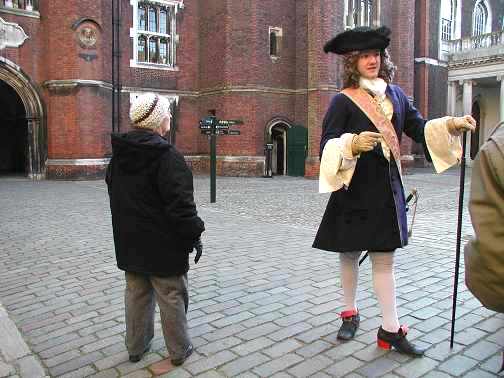 Another view of the Clock Court. Mom is looking off in the direction of the William III facade, which gives quite a contrast to the red Tudor brickwork of the other facade. I don't have any pictures of the inside, since you're not allowed to take photos inside because light damages historic pigments and fabrics, but I've got quite a lot of the Tudor Kitchens, as you'll see below. Another view of the Clock Court. Mom is looking off in the direction of the William III facade, which gives quite a contrast to the red Tudor brickwork of the other facade. I don't have any pictures of the inside, since you're not allowed to take photos inside because light damages historic pigments and fabrics, but I've got quite a lot of the Tudor Kitchens, as you'll see below. | |||
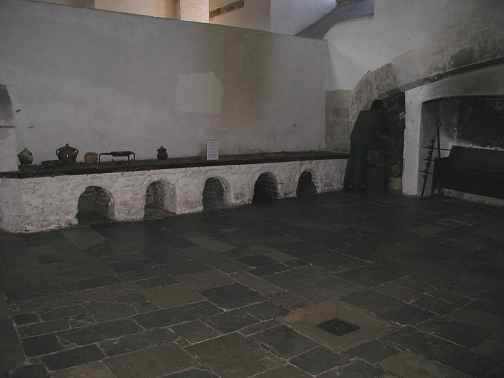 Here's a Tudor cooking range - fires were built on gratings in the top of that counter. Ashes fell through to the space below, where they could be carted off, and pans and pots were suspended over the gratings on metal frameworks. If you look closely, you can see a flat pan on a three-legged framework. Here's a Tudor cooking range - fires were built on gratings in the top of that counter. Ashes fell through to the space below, where they could be carted off, and pans and pots were suspended over the gratings on metal frameworks. If you look closely, you can see a flat pan on a three-legged framework. | |||
 One of the great fireplaces used for roasting large animals. Five hundred years of soot have gone into that huge black mark... One of the great fireplaces used for roasting large animals. Five hundred years of soot have gone into that huge black mark... | |||
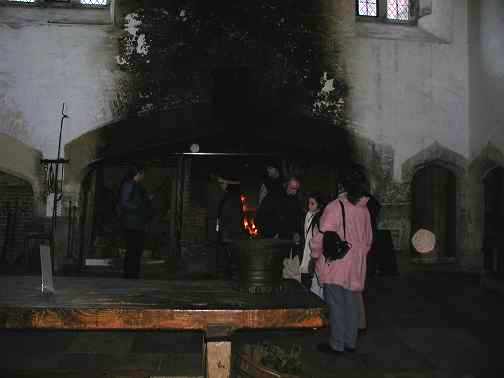 Some people standing in front of the fireplace so you can see just how big it is. Some people standing in front of the fireplace so you can see just how big it is. | |||
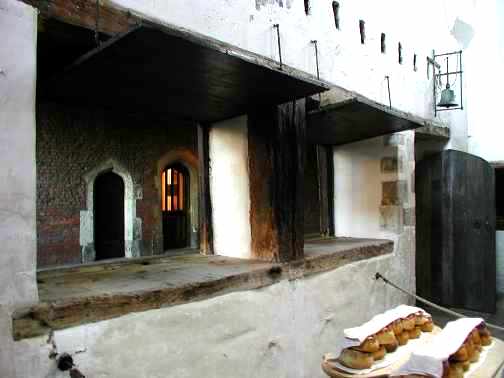 The pass-through, where finished dishes were passed through to the serving people who would take them upstairs to the Great Hall. The pass-through, where finished dishes were passed through to the serving people who would take them upstairs to the Great Hall. | |||
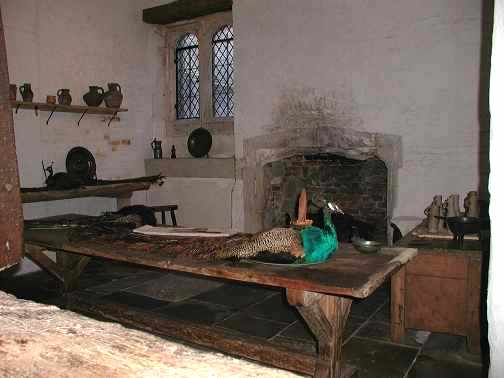 A smaller preparation room off to the side. A smaller preparation room off to the side. | |||
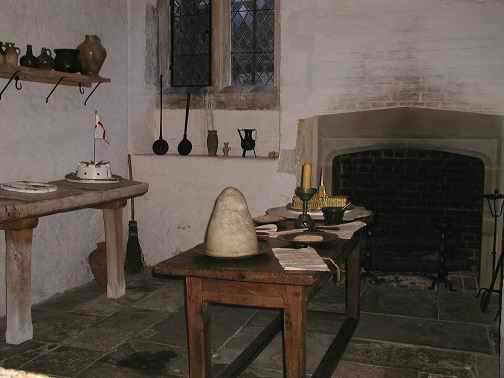 Another preparation room, with a cone of sugar in the foreground and two subtleties of buildings made of sugar and pastry in the background. Another preparation room, with a cone of sugar in the foreground and two subtleties of buildings made of sugar and pastry in the background. | |||
| |||